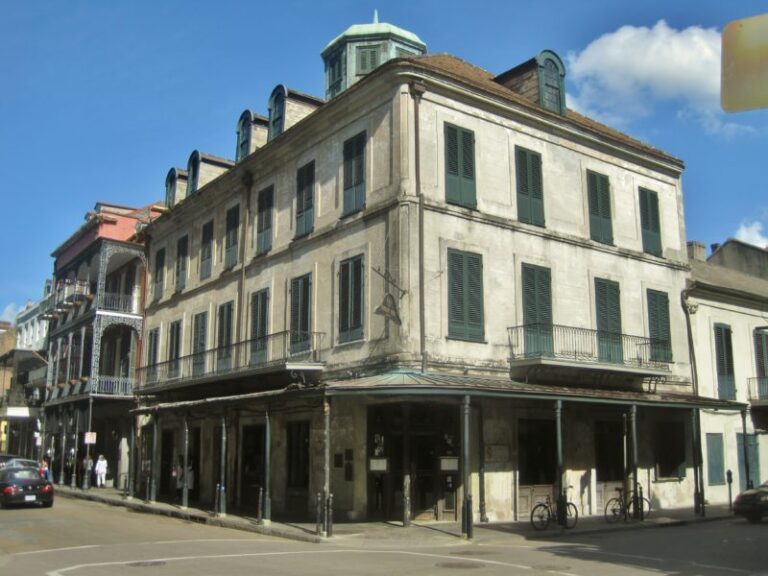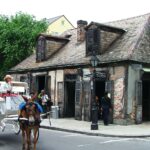The Napoleon House is a wonderful historic building in the French Quarter of New Orleans. People also call it “Mayor Girod House” or “Nicolas Girod House”, after the mayor of New Orleans, who owned it in the early 1800s and planned to rescue Napoleon Bonaparte from his exile in Saint Helena.
Chartres Street
Located in the heart of the French Quarter of New Orleans, Chartres Street is lined with amazing architectural landmarks. It offers access to many spots that are definitely worth a visit if you go to New Orleans. Apart from the Napoleon House, which is the highlight of this long street, you can visit…
- The New Orleans Pharmacy Museum: a beautifully preserved, circa 1823 pharmacy that extends on multiple stories.
- The Presbytere: a magnificent building funded by a Spanish philanthropist in 1791.
- The Old Ursuline Convent Museum: an ancient building dating back to 1745 which housed Ursuline nuns until 1824.
Who Was Nicolas Girod?
Nicolas Girod, born in 1751, migrated to Spanish Louisiana with several family members when he was not yet 30 years old. There, he became a successful merchant and bought property in the American Quarter, becoming a well-known figure in New Orleans in the early 1800s.
He was elected as New Orleans’ mayor in 1812, thus becoming the first mayor of the city to be elected regularly after Louisiana’s admission into the Union. In that same year, war broke out: the United States fought against the United Kingdom and their allies in North America. Girod prepared to defend New Orleans and in 1815 a battle was fought between the American and British armies in the city, ending in American victory. After this experience, Girod resigned and returned to managing his businesses all over New Orleans.
The Plot to Rescue Napoleon Bonaparte
Nicolas Girod is also famous for his plot to rescue Napoleon Bonaparte from his exile in Saint Helena, where the British had confined him. He even had a ship, the Seraphine, built for the mission and ready to sail out, rescue the French emperor, and bring him to New Orleans to live in the Napoleon House. However, shortly after the ship had sailed, the crew found out that Napoleon had already died on May 5th, 1821.
The Napoleon House
Built in 1974 and expanded in 1814, the Napoleon House served as an incredibly luxurious residence and a fine example of French-inspired architecture in New Orleans. The building counts three stories, is completely stuccoed, and features a dormered hip roof and a cupola. The balconies on the second floor boast some fine ironwork. In 1970, the Napoleon House was declared a National Historic Landmark thanks to its architectural characteristics.
At the start of the 20th Century, the Napoleon House housed a local grocery store to be transformed into a restaurant in 1914.
The Napoleon House Today: An Old-Time New Orleans Restaurant
In 1914, the Impastato family acquired the Napoleon House, converting it into a restaurant that exudes a unique atmosphere and serves traditional dishes such as red beans and rice, gumbo, and jambalaya. Its first owner, lovingly known as Uncle Joe, gave the restaurant the vibe it still holds today, thanks to classical music being played in the dining room. The locals love Napoleon House for its Sicilian muffuletta sandwiches!
In May 2015, the Impastato family decided to offer Ralph Brennan stewardship of the house. Brennan accepted the offer and declared that he wanted to leave the restaurant unchanged, maintaining its unique, old-fashioned style.
But what happened to the upper floors of the Girod House? During the 1900s, the rooms on the second and third floors were converted into apartments where it’s still possible to appreciate some of the original decorations and architecture of the house. However, the suite of rooms on the second floor, or “L’apartment de l’Empereur,” can be used for private parties and events such as dinners, cocktail parties, and receptions.










